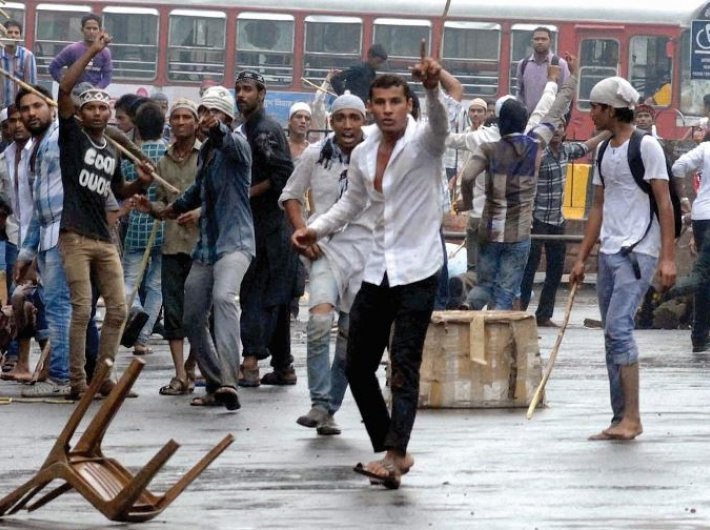Violence erupted despite prohibitory being in force, putting a question mark on imposition of Section 144
Despite prohibitory orders being imposed in Haryana, including Panchkula, Delhi and Uttar Pradesh, violence broke out after Dera Sacha Sauda chief Gurmeet Ram Rahim was convicted in a rape case.
Has the British-era Section 144 lost its effectiveness?
Section 144 of the CrPC is said to have been first used around 1861 in the State of Baroda by E.F. Deboo and was thereafter regularly enforced to put down protests by freedom fighters during the British Raj. Post-independence, this section was also used quite frequently to maintain public order.
This section empowers an executive magistrate to prohibit an assembly of more than four people in an area.
To the common people, the imposition of Section 144 sometimes make little or no sense. When you take a crowded bus or the packed metro, you unintentionally end up violating prohibitory orders.
Though there were prohibitory orders in Noida, people watched movies at malls. They too violated Section 144.
Even in the busy markets, at any given point of time, people can be found milling around. They are oblivious to orders that say they can’t be gathered at a spot.
Let’s take another example. A meeting of residents of a high-rise building was held in Gurgaon to discuss issues pertaining to maintenance. Over a 100 residents turned up. So, were they violating orders?
While we continue to cling to this British era legacy, the Britishers themselves have gone on to modify it.
Britain’s Public Order Act 1986 says: “Where 12 or more persons who are present together use or threaten unlawful violence for a common purpose and the conduct of them (taken together) is such as would cause a person of reasonable firmness present at the scene to fear for his personal safety, each of the persons using unlawful violence for the common purpose is guilty of riot.”
In India,
Section 144 in The Code Of Criminal Procedure, 1973 says that in cases where, “in the opinion of a District Magistrate, a Sub- divisional Magistrate or any other Executive Magistrate specially empowered by the State Government in this behalf, there is sufficient ground for proceeding under this section and immediate prevention or speedy remedy is desirable, such Magistrate may, by a written order stating the material facts of the case and served in the manner provided by section 134, direct any person to abstain from a certain act or to take certain order with respect to certain property in his possession or under his management, if such Magistrate considers that such direction is likely to prevent, or tends to prevent, obstruction, annoyance or injury to any person lawfully employed, or danger to human life, health or safety, or a disturbance of the public tranquility, or a riot, of an affray”.
Over 50 years back, the action under Section 144 was challenged in court.
In
Ram Manohar Lohia And Ors. vs State Of U.P. And Ors, the Allahabad high court on March 15, 1967 dismissed a petition that said Section 144 which relates to disturbance of the public tranquillity or a riot or an affray be struck down as unconstitutional.
The petition was a writ of habeas corpus by seven persons, including parliamentarian Ram Manohar Lohia, who were confined as undertrial prisoners in the district jail of Agra.
“A public meeting in connection with the observance of UP Bundh Day had been arranged to be held in the evening of July 11, 1966 in Phulatti Bazar, Agra and it was to be addressed by Ram Manohar Lohia. Lohia arrived at Rajamandi Railway Station Agra in the afternoon of July 11, 1966 by the Toofan Express and when he came out of the railway station he was arrested by the police. The other petitioners, who were present at the railway station to receive Lohia, were also arrested by the police at the same time. These arrests were for alleged violation of the above order of the District Magistrate of Agra.”
The court observed that while on the one hand the necessity for the right to freedom of speech and expression and to assemble peaceably and without arms in a democracy is there, “it cannot be denied that this right itself cannot be properly exercised by all without permitting a law which imposes reasonable restrictions in the interests of public order”.
One hundred and fifty years is too long a period of time since Section 144 has been in use. Times have changed dramatically since the section was introduced and it may no longer be as effective as it was then. The violence on Friday indicates that the legislators need to take a close look at it.

